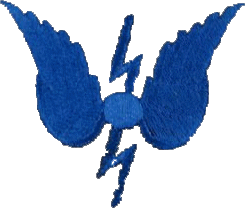|
|
|
|
|
DATE OF DESIGN |
|
1914. |
|
FREQUENCY RANGE |
|
1.298 Mc/s to 1.915 Mc/s but Submarine Wave was 1.547 Mc/s. Additionally, submarines used the Harbour Defence Wave = 1.911MHz and the Destroyer Wave = 1.403MHz. For reception the frequency range extends down to approximately 70 kHz. |
|
POWER SUPPLIES |
|
Motor Alternator. 'B', 'D' and 'E' Class submarines were fitted with alternators with supply voltages ranging from 95 to 140V DC, and 'C' Class submarines with supply voltages ranging from 155 to 200V DC. Both could be used whether the main batteries were being charged or not. The single-phase alternators were designed to give an output of 1.2kW at 70V AC 100 cycles at a speed of 3000 revs. For 'S' Class and other small submarines see below in the where used/fitted section for details of power supplies. The spark gap chamber had to be cleaned out after every four hour of signalling period because it got so dirty! |
|
RANGE IN MILES |
|
N/K or N/A |
|
TYPE OF SET |
|
SPARK |
|
WAVEFORM |
|
N/K or N/A |
|
METHOD OF PRODUCING OSCILLATIONS |
|
N/K or N/A |
|
WHERE USED/FITTED |
|
The Type 10 is a medium powered spark transmitter/receiver which was fitted into some submarines. Here is a brief history of W/T in submarines which supports the text in the the PRE WW1 files specifically 1913.one/three/four.pdf.The first submarine fitted for W/T was the HM S/M B5, and her set, which was partially portable, was cobbled together using various parts of the then well established Destroyer Set, the Type 4. The fit was ad hoc and posed major operating problems both for the designer and the the submariners who had to operate it - read the Pre WW 1 files. It became known as the Submarine Set and was given the name Type 10. However it had to be much modified later on for fitting into other submarines on a permanent basis (removable only for refits of the boat), and as a modified system it was established firmly as the Type 10 with B5's fit being referred to as the Portable Type 10, or Type 10(P). Once modified to permanent (non portable) fitting, the set became unnecessarily bulky and heavy, and owing to the lack of space available considerable difficulty was experienced in finding suitable accommodation for it in existing submarines. In all future boats a place would be assigned at the outset for fitting the Silent Cabinet and transmitting instruments in a permanent approved position. The idea was to design a new submarine set of considerably reduced weight and size for all new boats.
On the outbreak of war the design of this light-weight set was not completed, so a small compact set known as a 'Type S' was quickly designed and was fitted into 'S Class' submarines and any others where there is insufficient space to fit the Type 10 set. Type S was capable of transmitting the same waves (tunes) as the Type 10 but it was supplied with a 10-inch coil with hammer make and break in lieu of an alternator or rotary. No Silent Cabinet was fitted with the Type S. For many years prior to 1914, cleanliness of equipment including aerials and their associated deck insulators had been taught as mandatory, for cleanliness led to successful radio communications. Predictably with the hastily cobbled together Type S set and a war operating environment, plus the well known fact that submariners can keep things working with improvised jury rigs (when needs must!) the Admiralty issued this paragraph which can be found on page 6 of the Type 10 Set Handbook OU 5155. "It should be impressed upon operators that they cannot pay too much attention to keeping the instruments clean and dry, and all contacts and connections perfectly clean and smooth; this particularly applies to exposed connections such as the deck insulator. Temporary connections and non-service fittings should not be tolerated." The last sentence is rather naive given the life of a submariner! |
|
ASSOCIATED WAVEMETER |
|
Standard Service Wavemeter designed by HMS Vernon. |
|
FURTHER READING |
|
|
|
IMAGES, PHOTOS, DOCUMENTS, SCHEMATICS ETC.(Click images to enlarge) |
|
|


